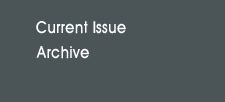|

|
 
|
|
|
Full Text: 
|
|
|
|
영남의대학술지 Vol.24_No.2 Suppl. P.S449-455, Dec. 2007
|
|
Original Article
|
|
영남대학교병원에서 동정된 비예기 항체의 빈도 및 분포: 2002년 1월에서 2006년 12월까지 최근 5년간의 경험 |
|
The Frequency and Distribution of Unexpected Antibodies at Yeungnam University Hospital: Recent Five Years Experience from January, 2002 to December, 2006
|
|
조희순, 이채훈, 김경동
|
|
영남대학교 의과대학 진단검사의학교실
|
|
|
|
책임저자:조희순, 대구광역시 남구 대명동 317-1, 영남대학교 의과대학 진단검사의학교실
|
|
Tel: (053) 620-3633, Fax: (053) 653-7774
|
|
E-mail: chscp@med.yu.ac.kr
|
|
December 30, 2007
|
|
|
|
Abstract
|
|
|
|
Background:Unexpected antibodies can cause hemolytic transfusion reaction or decrease the survival of transfused red blood cells. Type and screen is recommended for efficient transfusion, so we perform antibody screening test for pre-transfusion test. In this study, we investigated the frequency and distribution of unexpected antibodies at Yeungnam University Hospital during recent 5 years.
Methods:We analyzed the results of 28,944 antibody screening test that were performed for preparation of packed red cells from 2002 to 2006. Screening and identification of unexpected antibodies were carried out using a column agglutination method with the DiaMed ID system.
Results:Unexpected antibodies were detected from 234 samples (0.84%) out of 28,944 samples. After exclusion of samples from same patients, 185 patients had unexpected antibodies. Identification of unexpected antibodies were performed from 108 patients. Antibody that was detected most frequently was anti-E (36.1%), followed by anti-C and anti-Lea (6.5%), anti-c (4.6%), anti-D (3.7%), anti-Jkb (3.0%), anti-Jka, anti-S, anti-Xga (1.9%), anti-e, anti-Fya, anti-M, anti-Jsa and anti-Lub (0.9%). 15 patients (13.9%) had autoantibodies and 20 cases (18.5%) could not be identified by LISS/Coombs method.
Conclusion:The frequency of unexpected antibodies at our hospital was 0.84%, and the most identified unexpected antibodies were clinically significant. Therefore, antibody screening and identification tests are critical step in pre-transfusion test.
|
|
|
|
Key Words: Unexpected antibody, Type and screen, Column agglutination method
|
|
|
|
References |
|
|
|
|
|
1. Daniels GL, Moulds JJ, Anstee DJ, Bird GW, Brodheim E, Cartron JP, et al. ISBT working party on terminology for red cell surface antigens. Vox Sang 1993 Jan;65(1):77-80.
|
|
|
2. Kim KH, Han JY, Kim JM, Park KH, Han KS. Fatal acute hemolytic transfusion reaction due to Anti-E+Fy(a). Korean J Lab Med 2003 Feb;23(1):57-9.
|
|
|
3. Sazama K. Reports of 355 transfusion-associated deaths: 1976 through 1985. Transfusion 1990 Sep;30:583-90.
|
|
|
4. Han KS, Park MH, Kim SI. Transfusion medicine. 3rd ed. Seoul: Korea Medical Publishing Co. 2006.
|
|
|
5. American Association of Blood Bank (US). Technical Manual. 15th ed. Bethesda: The institute; 2005:89-94
|
|
|
6. Kim DC, Youn MS, Song EY, Kim JH, Choi BR, Oh DJ, et al. An experience of finding compatible blood for transfusion in liver transplantation recipient with unexpected antibodies of anti-C, anti-Jka and anti-Dia. Korean J Blood Transfus 2002 Dec;13:181-6.
|
|
|
7. Lapierre Y, Rigal D, Adam J, Josef D, Meyer F, Greber S, et al. The gel test: a new way to detect red cell antigen-natibody reactions. Transfusion 1990 Feb;20:109-13.
|
|
|
8. Reis KJ, Chachowski R, Cupio A, Jakway DJ, Setcavage TM. Column agglutination technology: the antiglobulin test. Transfusion 1993 Aug;33: 639-43.
|
|
|
9. Shin JW, Jeong SH, Nahm CH, Kim HO, Kwon OH. The direct antiglobulin test and antibody screening test based on the antiglobulin gel technique. Korean J Clini Pathol 1996 Jun;16:411-8.
|
|
|
10. Chae SL, Bang KH, Chang EA, Cha YJ. An evalulation of gel test for irregular antibody screeing. Korean J Blood Transfus 1998 Jun; 9(1):31-6.
|
|
|
11. Jung TK, Lee NY, Bae HG, Kwon EH, Park SH, Suh JS. Unexpected antibody positivity with the use of the LISS/Coombs gel test. Korean J Clin Pathol 2001 Oct;21(5):422-5.
|
|
|
12. Park JR, Heo WB, Park SH, Park KS, Suh JS. The frequency unexpected antibodies at Kyungpook National University Hospital. Korean J Blood Transfus 2007 Aug;18(2):97-104.
|
|
|
13. Cho YK, Kim DS, Lee HS, Choi SI. The frequency and distribution of unexpected antibodies in surgical patients at Chonbuk National University Hospital. Korean J Lab Med 2004 Feb;24:67-71.
|
|
|
14. Lee WH, Kim SY, Kim HO. The incidenco of unexpected antibodies in transfusion candidates. Korean J Blood Transfus 2000 Dec;11:99-103.
|
|
|
15. Park TS, Oh SH, Choi JC, Kim HH, Chang C, Lee EY, et al. A case of anti-Xga in a young man without previous transfusion. Korean J Lab Med 2002 Dec;22:437-40.
|
|
|
|
|
|
|
|
|
|
|
|
|
|
|
|
|
|
|
|
|
|
|
|
|
|
|
|
|
|
|
|
|
|
|
|
|
|
|
|
|
|
|
|
|
|
|
|
|
|
|
|
|
|
|
|
|
|
|
|
|
|
|
|
|
|
|
|
|
|
|
|
|
|
|
|
|
|
|
|

![]()